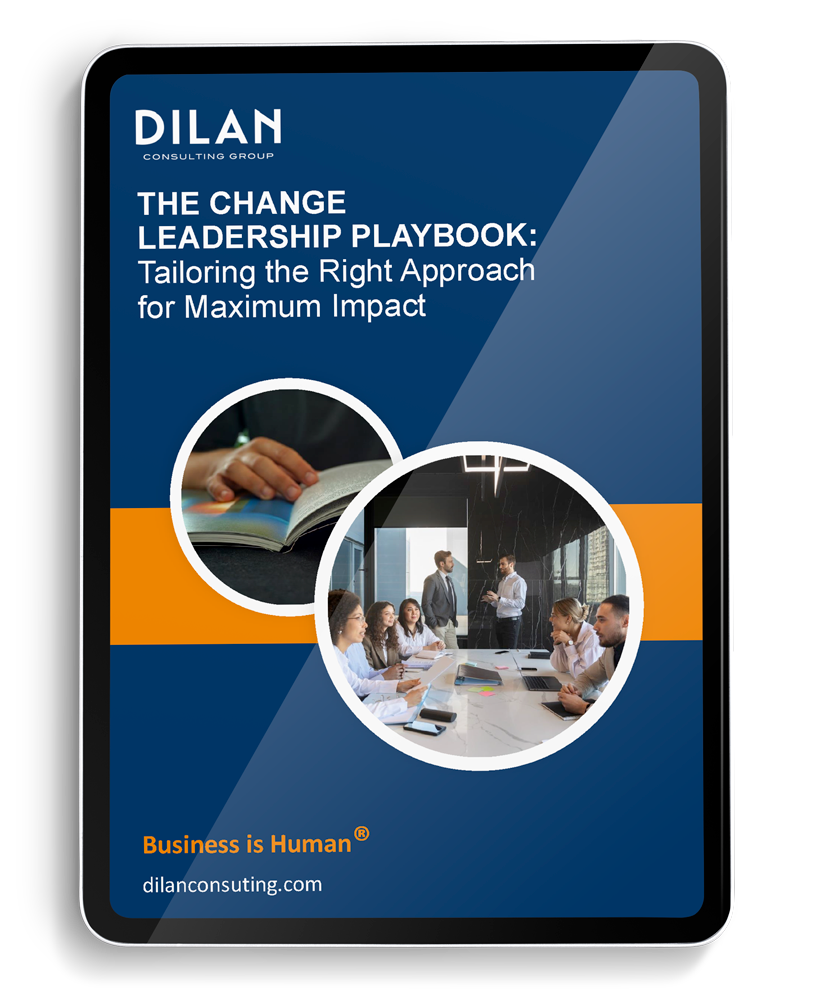In the dynamic landscape of modern business, change is inevitable and essential for growth and sustainability. However, the path to successful transformation is fraught with challenges, and one of the most significant obstacles is the tendency to overcomplicate or over plan change initiatives. For HR leaders and C-suite executives, understanding the pitfalls of excessive complexity in change management is crucial to steering their organizations toward effective and lasting transformation.
The Perils of Overcomplication in Change Management
Overcomplicating change efforts can manifest in various ways, including intricate planning processes, excessive documentation, and the implementation of overly complex frameworks. While thorough planning is essential, an overemphasis on detail can lead to analysis paralysis, where decision-making could be better due to overthinking and over analysis. This stagnation the implementation of change and dominates organizational agility, making it difficult to respond to evolving market demands.
Insights from Established Change Management Models
Several renowned change management models emphasize simplicity and clarity as cornerstones of successful transformation:
- Lewin’s Change Management Model:
Developed by Kurt Lewin in the 1950s, this model outlines a three-step process: Unfreeze, Change, and Refreeze. Lewin advocated straightforward strategies to prepare organizations for change, implement new methods, and solidify these changes into the organizational culture. Overcomplicating any of these stages can hinder progress and lead to resistance. - Kotter’s 8-Step Process for Leading Change:
John Kotter’s model provides a structured yet flexible approach to change. It emphasizes the importance of creating a sense of urgency and building a guiding coalition. Kotter warns against complacency and the pitfalls of overplanning, which can stifle momentum and engagement. - ADKAR Model:
The ADKAR model focuses on individual change through Awareness, Desire, Knowledge, Ability, and Reinforcement. It underscores the need for clear communication and straightforward steps to facilitate personal transitions and cautions against overwhelming employees with excessive information or complex procedures. - Adaptive Change Model:
Developed by Ronald Heifetz, the Adaptive Change Model focuses on the distinction between technical problems, which can be solved with existing knowledge, and adaptive challenges, which require new learning and collaboration. Heifetz argues that organizations often fail in their change efforts because they over-plan for technical solutions, neglecting the deeper cultural and behavioral shifts required for adaptive challenges.Adaptive change demands that leaders simplify their approach, listen to their teams, and facilitate learning. Overcomplicating adaptive changes risks alienating employees and missing critical nuances of the underlying issue.
The Impact of Overplanning on Organizational Change
Overplanning can lead to several detrimental outcomes:
- Delayed Implementation:
Excessive planning can consume valuable time and resources, delaying the execution of change initiatives and causing organizations to miss critical opportunities.
- Employee Resistance:
Complex plans can be intimidating and confusing, leading to resistance among employees who may feel overwhelmed or uncertain about their roles in the change process.
- Resource Drain:
Overcomplicated strategies often require more resources than necessary, diverting attention and funds from other vital areas of the organization.
Strategies to Avoid Overcomplication
To prevent overcomplication and overplanning in change management, HR leaders and executives should consider the following strategies:
- Embrace Agile Methodologies:
Adopting agile approaches allows organizations to implement changes incrementally, assess outcomes, and adjust strategies as needed, promoting flexibility and responsiveness. (Whatfix Guide to Agile Change) - Prioritize Clear Communication:
Ensure all stakeholders understand the change objectives, roles, and expected outcomes. Clear and concise communication fosters engagement and reduces uncertainty. - Empower Employees:
Involve employees in the change process by seeking their input and feedback. This inclusion enriches the change strategy, enhances buy-in, and reduces resistance. - Focus on Quick Wins:
Identify and implement small, achievable changes that can deliver immediate benefits. These quick wins build momentum and demonstrate the value of the change initiative. - Simplify Processes:
Streamline procedures and eliminate unnecessary steps to make the change process more manageable and less daunting for all involved. - Apply Adaptive Thinking:
For adaptive challenges, create an environment where employees can experiment, fail fast, and learn. Avoid overprescribing solutions; instead, guide the organization through discovery and innovation.
Conclusion
In change management, simplicity is not a compromise but a strength. HR leaders and C-suite executives can foster a more agile, responsive, and resilient organization by avoiding overcomplication and overplanning. Drawing on the wisdom of established change management models, including the Adaptive Change Model, leaders can navigate the complexities of transformation with clarity and purpose, ensuring that change initiatives are implemented, embraced, and sustained.
Recommended Resources
- Top 10 Change Management Models: A Comparison Guide
- The 8-Step Process for Leading Change
- Heifetz on Leadership in a Permanent Crisis
- Change Management Models: A Guide
By leveraging these insights, leaders can cultivate a continuous improvement and adaptability culture, steering their organizations toward sustained success in an ever-evolving business environment.



